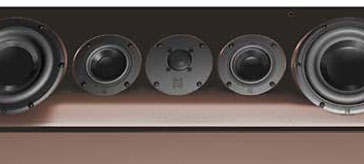DC Protection for Speakers

This is a MEMBER ONLY article. You need a subscription to read this article.
- Access to Elektor archive and 5,000+ Gerber files
- Receive up to 8 magazines per year (digital and/or paper)
- 10% discount in the Elektor store
Available from €4.95 per month.
What is Members Only
Elektor is committed to providing high-quality content on electronics, catering to tens of thousands of paying members. As part of this commitment, Elektor has launched Premium, an initiative that offers exclusive online articles to members sometimes even before they appear in the magazine.
Every day, members can access in-depth articles that showcase the best of Elektor's premium content.
This initiative aims to reward members with early access. Once logged in, members can easily enjoy this exclusive content and engage in discussions about featured projects. While Premium adds to the existing resources available, Elektor will continue to provide a wealth of free information.
Join the Elektor community today to take advantage of Premium and other benefits!



Discussion (0 comments)
F1Andy 2 years ago
I was wondering if there is there a reason to use op-amps instead of comparators (e.g. LM339)?
Many thanks,
Andy
audeq2 2 years ago
• Speed
• Inconvenient input structures
• Inconvenient logic structures
• Stability/hysteresis
Op amps are meant to be operated in a closed feedback loop. Some op amps have back-to-back diodes in parallel with the inputs. Some op amps inputs could be damaged or the input parameters degraded by using them as comparators.
EN0167479ID 2 years ago
Nelson Pass built SE FET amps inspired by Jean Hiraga's late 1970s Nemesis amp. a very simple design that can sound excellent, IMO not despite, but because of having an output transformer. (the best protection against DC… – much more reliable than any electronic circtuit, and w/o eight-legged fuses and noisy 555s. and also w/o relais contacts that can and eventually will weld together and thus not open when they should.)
btw check out Tom Christiansen's (Neurochrome) Guardian circuit. it does exactely what you were looking for. they work very well.
Dego 2 years ago
The trimmer in series with the transistor base - to compensate for different relay behaviors (!) - is certainly not recommended. It will run the transistor into its very much temperature-dependent linear region and also hot, as the author pointed out.
The author might have added the trimmer to solve a problem due to the diodes in series with the output of the opamps - probably not being able to turn off the transistor properly (without tweaking the trimmer...). LM358 does not swing close to the ground with a 1mA sinking current.
Many of the bypass capacitors could be left out in this circuit without problems. Using a QUAD comparator you could easily remove the 555 timer from the circuit...